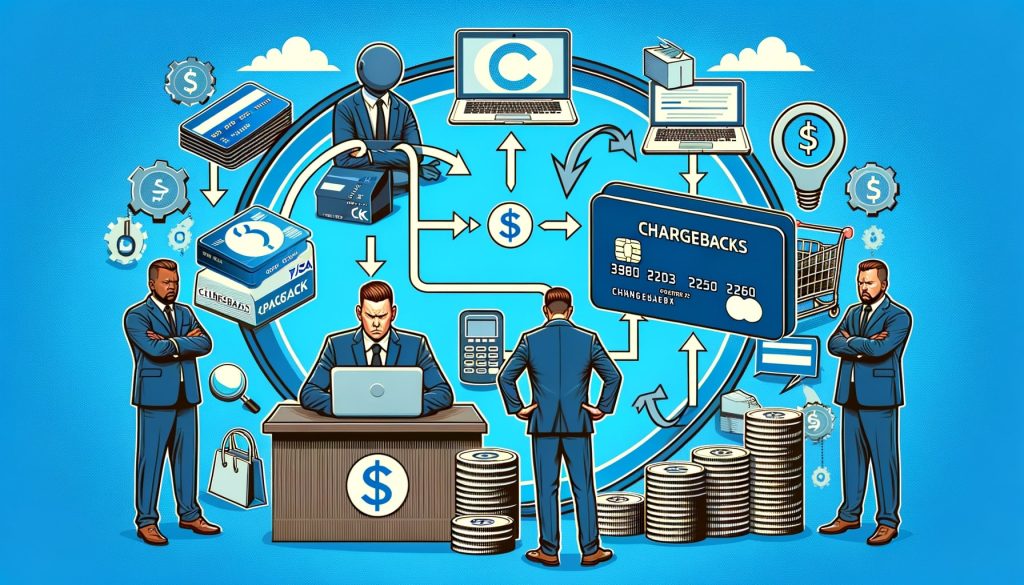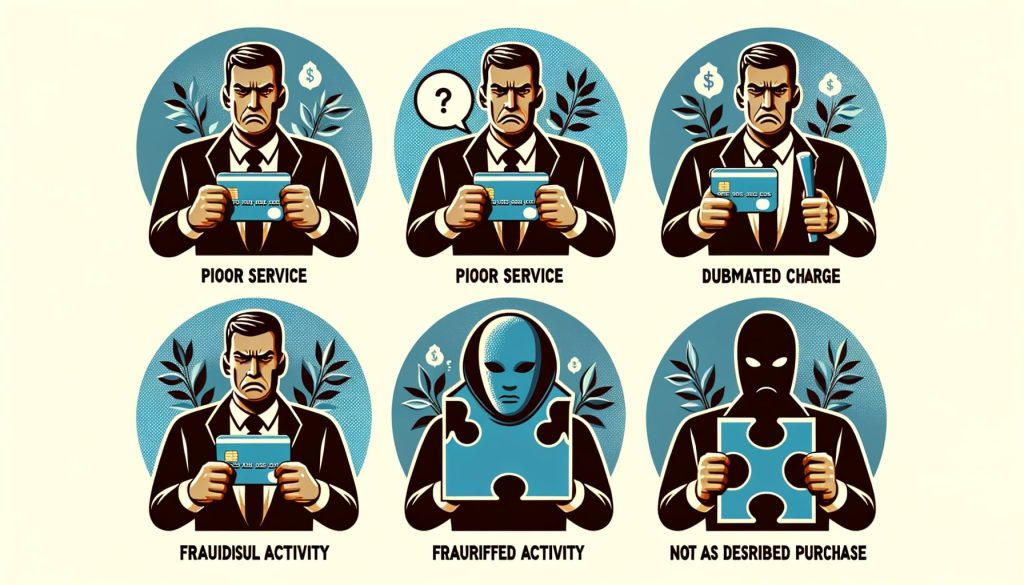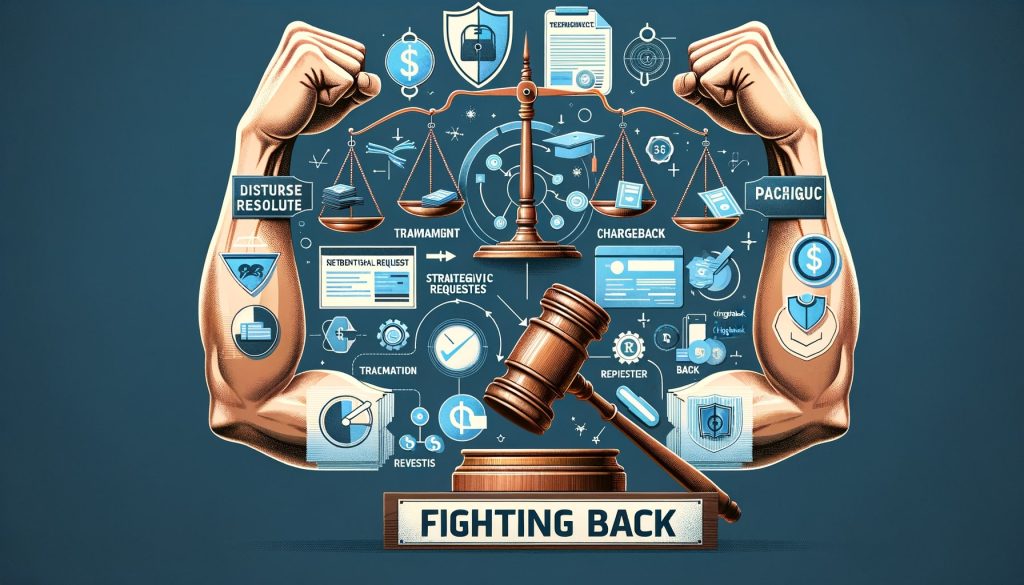
By Manoj Bhatt October 15, 2024
Chargebacks are a common occurrence in the world of commerce, but many people are still unfamiliar with what they are and how they work. In simple terms, a chargeback is a transaction reversal initiated by the cardholder’s bank. It allows consumers to dispute a charge on their credit or debit card and request a refund from the merchant. Chargebacks were initially introduced as a consumer protection mechanism to safeguard against fraudulent or unauthorized transactions. However, they have evolved into a complex process that can have significant implications for merchants.
Understanding the basics of chargebacks is crucial for both consumers and merchants. For consumers, it provides a means to protect themselves from fraudulent or unsatisfactory transactions. For merchants, it is essential to comprehend the chargeback process to effectively manage disputes, prevent fraud, and maintain a healthy bottom line. In this article, we will delve into the intricacies of chargebacks, exploring the step-by-step process, common reasons for chargebacks, prevention strategies, dispute resolution techniques, fraud identification, industry-specific challenges, and legal considerations.
The Process of Chargebacks: Step-by-Step Guide

The chargeback process involves several steps and parties, including the cardholder, the issuing bank, the acquiring bank, and the merchant. Understanding each step is crucial for both consumers and merchants to navigate the process effectively.
- Cardholder Disputes a Charge: The chargeback process begins when a cardholder identifies a transaction they wish to dispute. This could be due to various reasons, such as unauthorized charges, non-receipt of goods or services, or dissatisfaction with the quality of the product.
- Cardholder Contacts the Issuing Bank: The cardholder contacts their issuing bank to initiate the chargeback process. They provide details of the disputed transaction, including the date, amount, and reason for the dispute.
- Issuing Bank Investigates: Upon receiving the dispute, the issuing bank investigates the claim. They review the provided information, communicate with the cardholder, and assess the validity of the dispute. If the issuing bank determines that the dispute is valid, they proceed with the chargeback.
- Issuing Bank Initiates the Chargeback: Once the issuing bank concludes that the dispute is valid, they initiate the chargeback by debiting the merchant’s account and crediting the cardholder’s account. The merchant is notified of the chargeback and provided with relevant details.
- Acquiring Bank Notifies the Merchant: The acquiring bank, which is the bank that processes the merchant’s transactions, receives the chargeback notification from the issuing bank. They inform the merchant about the chargeback, providing details of the disputed transaction and the reason for the chargeback.
- Merchant Responds to the Chargeback: Upon receiving the chargeback notification, the merchant has the opportunity to respond to the dispute. They can provide evidence to challenge the chargeback, such as proof of delivery, customer communication, or transaction records.
- Acquiring Bank Reviews the Merchant’s Response: The acquiring bank reviews the merchant’s response and supporting evidence. They assess the validity of the merchant’s claims and determine whether to accept or reject the chargeback.
- Resolution of the Chargeback: Based on the acquiring bank’s assessment, the chargeback is either upheld or reversed. If the chargeback is upheld, the merchant loses the disputed funds, and the cardholder receives a refund. If the chargeback is reversed, the merchant retains the funds, and the cardholder’s account is debited.
- Arbitration and Second Chargebacks: In some cases, if the merchant disagrees with the acquiring bank’s decision, they can request arbitration. This involves a third-party mediator who reviews the evidence and makes a final decision. Additionally, cardholders can initiate a second chargeback if they are dissatisfied with the outcome of the initial chargeback.
- Reporting and Monitoring: Chargebacks are not without consequences for merchants. Excessive chargebacks can lead to financial penalties, increased processing fees, and even the termination of merchant accounts. Therefore, it is crucial for merchants to monitor and manage chargebacks effectively.
Common Reasons for Chargebacks: Exploring the Causes

Chargebacks can occur for a variety of reasons, ranging from legitimate disputes to fraudulent activities. Understanding the common causes of chargebacks is essential for merchants to identify potential vulnerabilities and implement preventive measures. Let’s explore some of the most prevalent reasons for chargebacks:
- Fraudulent Transactions: One of the primary reasons for chargebacks is fraudulent activity. This can include unauthorized use of a stolen card, identity theft, or counterfeit cards. Cardholders often dispute these transactions once they discover the fraudulent activity on their account.
- Non-Delivery of Goods or Services: When a cardholder does not receive the purchased goods or services, they may initiate a chargeback. This can occur due to shipping issues, delays, or failure on the merchant’s part to fulfill the order.
- Dissatisfaction with Product or Service: Cardholders may dispute a charge if they are dissatisfied with the quality, condition, or performance of the product or service they received. This can include receiving damaged goods, incorrect items, or poor customer service.
- Billing Errors: Chargebacks can also occur due to billing errors, such as duplicate charges, incorrect amounts, or unauthorized add-ons. Cardholders may dispute these charges to rectify the billing discrepancy.
- Subscription Cancellations: Subscription-based businesses often face chargebacks when cardholders dispute charges after canceling their subscription. This can happen if the cancellation process is unclear, or if the merchant continues to charge the cardholder after cancellation.
- Friendly Fraud: Friendly fraud, also known as chargeback fraud, occurs when a cardholder intentionally disputes a legitimate charge. This can happen due to buyer’s remorse, forgetfulness, or an attempt to obtain a refund without returning the product.
- Unauthorized Use by Family Members: Chargebacks can occur when a family member or authorized user of the card makes a purchase without the cardholder’s knowledge or consent. The cardholder may dispute these charges as unauthorized.
- Technical Issues: Technical glitches or errors during the transaction process can lead to chargebacks. This can include double charges, declined transactions despite successful payment, or system malfunctions.
- Misrepresentation or Misleading Advertising: If a merchant misrepresents their product or service, uses misleading advertising, or fails to deliver on promised benefits, cardholders may dispute the charge.
- Processing Errors: Chargebacks can also occur due to processing errors on the part of the merchant or the acquiring bank. This can include incorrect transaction amounts, duplicate charges, or failure to process refunds.
Understanding these common causes of chargebacks is crucial for merchants to identify potential vulnerabilities in their business operations. By addressing these issues proactively, merchants can reduce the risk of chargebacks and maintain a positive customer experience.
How to Prevent Chargebacks: Best Practices for Merchants

Prevention is the key to minimizing chargebacks and their associated costs for merchants. By implementing best practices and proactive measures, merchants can significantly reduce the occurrence of chargebacks. Let’s explore some effective strategies for preventing chargebacks:
- Clear and Transparent Policies: Merchants should clearly communicate their policies regarding refunds, returns, cancellations, and customer disputes. This includes providing detailed information on their website, in-store signage, and order confirmations. Transparent policies help set customer expectations and reduce misunderstandings that can lead to chargebacks.
- Accurate Product Descriptions and Images: Merchants should ensure that their product descriptions and images accurately represent the actual product. Misleading or inaccurate representations can lead to customer dissatisfaction and subsequent chargebacks.
- Prompt Customer Service: Providing prompt and responsive customer service is crucial for preventing chargebacks. Merchants should promptly address customer inquiries, concerns, and complaints to resolve issues before they escalate to chargebacks.
- Secure Payment Processing: Merchants should prioritize secure payment processing to protect customer data and prevent fraudulent transactions. Implementing robust security measures, such as encryption, tokenization, and fraud detection tools, can significantly reduce the risk of chargebacks due to fraud.
- Address Verification Service (AVS): AVS is a fraud prevention tool that verifies the cardholder’s billing address against the address on file with the issuing bank. Merchants can use AVS to ensure that the cardholder’s address matches the billing address provided during the transaction, reducing the risk of chargebacks due to unauthorized use.
- Card Verification Value (CVV): CVV is the three-digit code on the back of a credit or debit card. Merchants should require customers to provide the CVV during the transaction to verify that the cardholder has physical possession of the card. This adds an extra layer of security and reduces the risk of chargebacks due to unauthorized use.
- Order Confirmation and Tracking: Merchants should send order confirmation emails to customers, including details of the purchase, shipping information, and tracking numbers. This helps establish a clear record of the transaction and provides customers with visibility into the delivery process, reducing the risk of chargebacks due to non-delivery.
- Customer Authentication: Implementing customer authentication measures, such as two-factor authentication or biometric verification, can help ensure that the cardholder is the legitimate owner of the card. This reduces the risk of chargebacks due to unauthorized use or friendly fraud.
- Effective Dispute Resolution: Merchants should have a streamlined and efficient dispute resolution process in place to address customer concerns and resolve disputes promptly. By providing a clear channel for customers to voice their concerns, merchants can prevent chargebacks resulting from unresolved issues.
- Monitoring and Analytics: Merchants should regularly monitor transaction data, chargeback ratios, and customer feedback to identify patterns and potential issues. By analyzing this data, merchants can proactively address vulnerabilities, implement preventive measures, and improve their overall business operations.
By implementing these best practices, merchants can significantly reduce the occurrence of chargebacks and mitigate the associated costs and risks. Prevention should be a priority for merchants, as chargebacks can have a detrimental impact on their reputation, profitability, and long-term sustainability.
Chargeback Disputes: Strategies for Fighting Back

When faced with a chargeback, merchants have the opportunity to dispute the claim and provide evidence to challenge the chargeback. Effectively fighting back against chargebacks requires a strategic approach and a thorough understanding of the dispute resolution process. Let’s explore some strategies that merchants can employ to increase their chances of successfully disputing chargebacks:
- Gather and Preserve Evidence: The first step in disputing a chargeback is to gather and preserve all relevant evidence. This can include transaction records, order confirmations, shipping receipts, customer communication, and any other documentation that supports the merchant’s case. It is crucial to maintain a comprehensive record of all transactions and customer interactions to provide evidence during the dispute process.
- Understand the Reason Code: Chargebacks are assigned specific reason codes that indicate the basis for the dispute. Merchants should familiarize themselves with the reason codes relevant to their industry to understand the specific requirements for disputing each type of chargeback. This knowledge helps merchants tailor their response and provide evidence that directly addresses the reason for the dispute.
- Craft a Compelling Response: When responding to a chargeback, merchants should provide a detailed and persuasive argument that challenges the cardholder’s claim. The response should address the reason for the dispute, provide evidence to support the merchant’s position, and clearly articulate why the chargeback is unwarranted. It is essential to be concise, factual, and professional in the response.
- Provide Clear Documentation: Merchants should provide clear and organized documentation to support their case. This can include proof of delivery, signed receipts, customer communication logs, and any other relevant records. The documentation should be easy to understand and directly address the reason for the dispute.
- Collaborate with the Acquiring Bank: Merchants should maintain open lines of communication with their acquiring bank throughout the dispute process. The acquiring bank can provide guidance, insights, and support in challenging chargebacks. By collaborating with the acquiring bank, merchants can leverage their expertise and increase their chances of successfully disputing chargebacks.
- Leverage Chargeback Representment Services: Chargeback representment services are third-party providers that specialize in helping merchants dispute chargebacks. These services have expertise in navigating the complex dispute resolution process and can provide valuable support in crafting compelling responses, gathering evidence, and representing the merchant’s case. Merchants should consider partnering with a reputable chargeback representment service to increase their chances of success.
- Arbitration and Mediation: If the acquiring bank upholds the chargeback and the merchant disagrees with the decision, they can request arbitration or mediation. This involves a third-party mediator who reviews the evidence and makes a final decision. Arbitration and mediation can be effective in resolving disputes that cannot be resolved through the initial chargeback process.
- Continuous Improvement: Merchants should view chargebacks as an opportunity for continuous improvement. By analyzing the reasons for chargebacks, identifying patterns, and addressing underlying issues, merchants can implement preventive measures to reduce the occurrence of future chargebacks. This can include improving customer service, enhancing product quality, or streamlining business processes.
Effectively disputing chargebacks requires a proactive and strategic approach. By gathering compelling evidence, understanding the reason codes, crafting persuasive responses, collaborating with the acquiring bank, leveraging chargeback representment services, and continuously improving their operations, merchants can increase their chances of successfully fighting back against chargebacks.
Chargeback Fraud: Identifying and Preventing Scams
Chargeback fraud, also known as friendly fraud, occurs when a consumer intentionally abuses the chargeback process to obtain a refund while retaining the purchased goods or services. This type of fraud poses a significant challenge for merchants, as it can result in financial losses and damage to their reputation. Here are some strategies to identify and prevent chargeback fraud:
- Transaction Verification: Implement robust transaction verification processes to ensure that the person making the purchase is the legitimate cardholder. This can include requesting additional identification documents or using biometric authentication methods.
- Address Verification Service (AVS): Utilize AVS to verify the billing address provided by the customer matches the address on file with the issuing bank. Inconsistencies may indicate potential fraud.
- Card Security Codes: Require customers to provide the three or four-digit card security code (CVV/CVC) during the checkout process. This adds an additional layer of security and helps verify the legitimacy of the transaction.
- IP Geolocation: Analyze the IP address of the customer to determine if it matches the billing address or the location typically associated with the customer’s account. Unusual IP addresses may indicate potential fraud.
- Purchase Velocity Monitoring: Monitor the frequency and volume of transactions from individual customers. Unusually high purchase velocity may indicate fraudulent activity.
- Device Fingerprinting: Implement device fingerprinting technology to identify and track devices used for transactions. This helps detect patterns of fraudulent behavior across multiple transactions.
- Chargeback Alerts: Sign up for chargeback alert services that notify merchants of potential fraudulent chargebacks. These alerts can help merchants identify patterns of abuse and take appropriate action.
- Customer Behavior Analysis: Analyze customer behavior, such as browsing patterns, purchase history, and return rates, to identify potential fraudsters. Unusual behavior or inconsistencies may indicate fraudulent activity.
- Enhanced Customer Authentication: Implement additional layers of customer authentication, such as two-factor authentication or biometric verification, to ensure the legitimacy of transactions.
- Education and Awareness: Educate customers about the consequences of chargeback fraud and the impact it has on businesses. Raise awareness about the importance of ethical purchasing behavior and discourage fraudulent activities.
Chargeback Management: Tools and Techniques for Businesses
Effectively managing chargebacks is crucial for businesses to minimize financial losses and maintain a healthy cash flow. Here are some tools and techniques that can help businesses streamline their chargeback management process:
- Chargeback Management Software: Utilize chargeback management software to automate and streamline the chargeback process. These tools can help merchants track and manage chargebacks, generate reports, and provide insights into chargeback trends.
- CRM Integration: Integrate chargeback management software with your customer relationship management (CRM) system to centralize customer data and streamline communication. This allows for efficient dispute resolution and reduces the risk of chargebacks.
- Dispute Documentation: Maintain detailed records of all customer interactions, transactions, and communication. This documentation can be crucial in providing evidence during the chargeback process.
- Chargeback Representment: When a chargeback is initiated, merchants have the option to initiate a representment, which involves appealing the chargeback decision. Utilize chargeback representment services or work with experts who can help build a strong case and increase the chances of a successful representment.
- Chargeback Analytics: Utilize chargeback analytics tools to analyze and identify patterns in chargeback data. This can help businesses identify the root causes of chargebacks and implement targeted prevention strategies.
- Chargeback Alerts and Notifications: Set up automated alerts and notifications to promptly notify merchants of chargebacks. This allows for timely action and reduces the risk of missed deadlines or opportunities for representment.
- Chargeback Reason Codes: Familiarize yourself with the various chargeback reason codes provided by card networks. Understanding the specific reasons for chargebacks can help businesses address the root causes and implement preventive measures.
- Chargeback Response Templates: Develop standardized chargeback response templates that can be customized based on the specific circumstances of each chargeback. This ensures consistency and efficiency in responding to chargebacks.
- Chargeback Monitoring: Regularly monitor chargeback rates, reasons, and trends to identify areas of improvement. Implement proactive measures to address recurring issues and reduce chargeback rates.
- Collaboration with Payment Processors: Work closely with your payment processor to understand their chargeback management policies and procedures. Collaborate on chargeback prevention strategies and leverage their expertise to minimize chargeback risks.
Chargebacks in Different Industries: Unique Challenges and Solutions
Chargebacks can vary significantly across different industries, with each industry facing unique challenges and requiring tailored solutions. Here are some examples of industries and their specific chargeback challenges:
- E-commerce: E-commerce businesses often face challenges related to card-not-present transactions, where the customer is not physically present during the transaction. Implementing robust fraud detection tools, secure payment gateways, and effective dispute resolution processes are crucial for e-commerce merchants.
- Travel and Hospitality: The travel and hospitality industry faces challenges related to cancellations, refunds, and disputes over service quality. Clear communication, transparent refund policies, and accurate documentation are essential to minimize chargebacks in this industry.
- Subscription Services: Subscription-based businesses often face challenges related to recurring billing and customer dissatisfaction. Clearly communicate subscription terms, provide easy cancellation options, and promptly address customer concerns to reduce chargebacks.
- Digital Goods and Services: Businesses that sell digital goods and services, such as software, music, or online courses, face challenges related to unauthorized downloads or dissatisfaction with the product. Implementing secure download links, digital rights management, and clear refund policies can help minimize chargebacks.
- High-Risk Industries: Certain industries, such as adult entertainment, online gambling, or nutraceuticals, are considered high-risk due to the potential for fraud or regulatory issues. Implementing stringent verification processes, robust fraud detection tools, and compliance with industry regulations are crucial in these industries.
Chargeback Regulations and Policies: Compliance and Legal Considerations

Compliance with chargeback regulations and policies is essential for businesses to avoid penalties, fines, and reputational damage. Here are some key compliance and legal considerations related to chargebacks:
- Card Network Rules: Familiarize yourself with the chargeback rules and regulations set by card networks, such as Visa, Mastercard, or American Express. Adhere to their guidelines regarding chargeback thresholds, timeframes for response, and representment procedures.
- Chargeback Timeframes: Understand the specific timeframes within which chargebacks must be responded to and representments must be initiated. Failure to meet these deadlines can result in automatic chargeback acceptance and loss of funds.
- Chargeback Reason Codes: Gain a thorough understanding of the chargeback reason codes provided by card networks. Each reason code has specific requirements for evidence and documentation. Ensure that your responses align with the relevant reason codes.
- Documentation and Evidence: Maintain detailed records of all customer interactions, transactions, and communication. This documentation is crucial in providing evidence during the chargeback process and can help support your case during representment.
- Compliance with Regulations: Ensure compliance with relevant regulations, such as the Payment Card Industry Data Security Standard (PCI DSS) and General Data Protection Regulation (GDPR). Failure to comply with these regulations can result in penalties and legal consequences.
- Chargeback Alerts and Notifications: Stay informed about chargeback alerts and notifications provided by card networks or payment processors. These alerts often contain important updates or changes in chargeback regulations that businesses need to be aware of.
- Legal Support: In complex chargeback cases or situations involving legal disputes, consider seeking legal support from professionals experienced in chargeback management and dispute resolution. They can provide guidance and representation throughout the process.
FAQs
Q1. What is a chargeback?
A chargeback is a process that allows consumers to dispute a transaction and request a refund from their bank or credit card issuer.
Q2. What are the common reasons for chargebacks?
Common reasons for chargebacks include unauthorized transactions, non-receipt of goods or services, dissatisfaction with the product or service, or fraudulent activity.
Q3. How can merchants prevent chargebacks?
Merchants can prevent chargebacks by implementing clear communication, prompt customer service, secure payment processing, accurate billing descriptors, order verification, effective fraud detection, chargeback alerts, dispute resolution, and order fulfillment and delivery.
Q4. What is chargeback fraud?
Chargeback fraud, also known as friendly fraud, occurs when a consumer intentionally abuses the chargeback process to obtain a refund while retaining the purchased goods or services.
Q5. How can businesses manage chargebacks effectively?
Businesses can manage chargebacks effectively by utilizing chargeback management software, integrating with CRM systems, maintaining dispute documentation, initiating chargeback representment, analyzing chargeback data, setting up alerts and notifications, and collaborating with payment processors.
Conclusion
Chargebacks are a complex and ever-evolving aspect of the modern business landscape. Understanding the basics of chargebacks, the step-by-step process, prevention strategies, fraud identification, management tools, industry-specific challenges, and legal considerations is crucial for both merchants and consumers.
By implementing best practices for chargeback prevention, businesses can minimize financial losses, maintain customer satisfaction, and protect their reputation. Utilizing tools and techniques for chargeback management can streamline the process and increase the chances of successful representment.
Chargebacks pose unique challenges in different industries, requiring tailored solutions and preventive measures. Compliance with chargeback regulations and policies is essential to avoid penalties and legal consequences.
By staying informed, proactive, and vigilant, businesses can navigate the complex world of chargebacks and protect their financial interests while providing excellent customer service.
